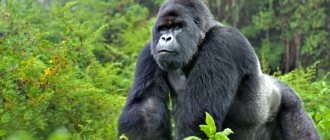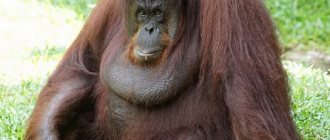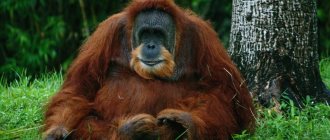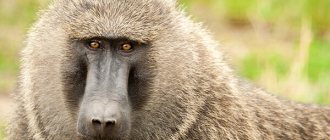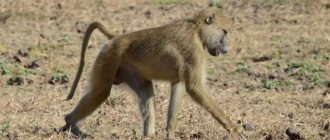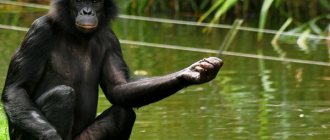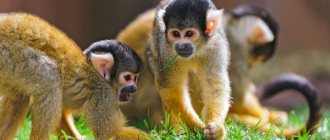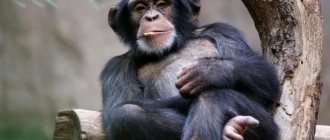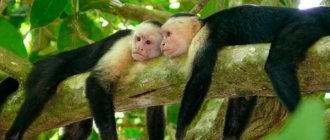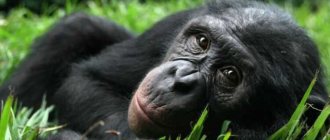- Wild animals
- >>
- Mammals
Not everyone is familiar with such a representative of flora and fauna as the tamarin . These are the indigenous people of South America. Tamarins are small monkeys that are members of the marmoset family. They have a very memorable, bright appearance. These primates are among the smallest in the world. This type of monkey is divided into several more subspecies. Representatives of different subspecies may differ in color, size and habitat.
Origin of the species and description
Photo: Tamarin
Tamarins are chordates and belong to the class of mammals, order of primates, family of marmosets, and genus of tamarins.
The most ancient ancestors of all monkeys are primate-like mammals - purgatorius. According to the discovered finds, their remains date back to the Pleocene. They were discovered on the territory of modern America. These are very primitive creatures that gave rise to other, more adapted and highly developed creatures - plesiadapis and tupai.
Video: Tamarin
The first existed during the Paleocene and Eocene periods in Europe and North America. Their appearance resembled mice or rats. They had an elongated muzzle, a thin, long body and a long tail. These animals lived in trees and ate insects and various types of vegetation.
Tupai lived in the territory of modern Asia during the Eocene and Upper Paleocene. They had a structure of teeth and limbs that was as close as possible to the anatomy of modern primates. Later in the process of evolution, animals were distributed among different regions. Depending on their habitat, they have developed certain lifestyle features and external signs. Based on these characteristics, primates are divided into different species.
Description
Black tamarins are members of the marmoset family: small primates that are still slightly larger than marmosets, but still quite miniature creatures (less than 30 cm, with a tail a little more than 20 cm). The fangs of these monkeys protrude outward; unlike marmosets, they do not have tufts of hair at the ears and rings on the tail. The common tamarin is truly black - since both the fur itself and the skin of its face are black.
There are two subspecies of tamarins:
- Black-backed tamarin;
Black-backed tamarin
- Red-handed tamarin
Red-handed tamarin
Thus, red-handed tamarins have a golden-red hue to the fur of their upper legs. The face of the black tamarin, like that of all saguinids (excluding Marikinas), is distinguished by the absence of hair and the absence of upper eyelashes. The animal's ears are also completely hidden under the fur.
Appearance and features
Photo: Tamarin monkey
The body length of one adult individual ranges from 19 to 35 centimeters. Primates have a very long tail. Its size is almost equal to the size of the body and ranges from 20 to 40 centimeters. Regardless of the subspecies, its representatives differ from other monkeys in their bright and unusual appearance and unusual combination of colors. The animals have very thick and soft fur. Its color can be very diverse.
Characteristic color for small primates:
- yellow;
- white;
- black;
- lactic;
- brown;
- various shades of red;
- honey;
- gold and its various tones.
A characteristic feature of this particular type of primate is the amazing combination of all kinds of color variations. Some individuals and subspecies have very clearly defined eyebrows, nose contours, mustaches, beards, “toes on legs,” etc. There are representatives of individual subspecies that have such an unusual combination of colors that from a distance they are often mistaken for unusual outlandish birds.
Depending on the subspecies, the monkeys’ faces are completely devoid of vegetation or, conversely, completely covered with hair. The average body weight of one adult individual is 300-400 grams. Most subspecies of this species are distinguished by a predominance of black color. It is worth noting that this color is characteristic not only as a coat color, but also as a skin color.
Lifestyle
Tamarins live in small groups (from a couple to seven individuals), and very strictly monitor the territory that belongs to them: if animals from a neighboring group enter it, the owners begin to pursue them with a frantic cry, even to the point of crossing borders. A high-pitched scream in the morning reminds those around that this territory is not free and is guarded very vigilantly. And members of neighboring flocks very actively respond to these cries. A matriarchal hierarchy reigns in the tamarin clan - the leader is always the eldest female.
Communication between tamarins is based not only on sound, but also on odorous marks with a wide variety of information (from gender to the position of the individual), containing esters. Tamarins are quite mobile and can jump up to 8 m. They are considered omnivores and can even feed on bark and resin.
Where does the tamarin live?
Photo: Imperial tamarin
Monkeys choose tropical forests with dense vegetation as their habitat. A prerequisite is a large number of fruit species of trees and shrubs. Most representatives of this species live in forests of the new world. They are indigenous to South America.
Geographical regions where tamarins live:
- Central regions of South America;
- Costa Rica;
- Northern Bolivia;
- Amazon;
- Colombia;
- Brazil;
- Peru.
Animals spend most of their time in dense thickets. Their small size and tenacious paws with a long tail allow the animals to climb to the very top and feast on ripe fruits at the top of the tallest trees. Monkeys prefer warm, dry climates. They do not tolerate sudden changes in climatic conditions, cold, and high humidity very well.
Monkeys spend virtually no time on the surface of the earth. The tops and dense crowns of trees help not only to find sufficient quantities of food, but also to escape from numerous predators.
The Story of Life at the Zoo
You can see Oedipus tamarins in the “Monkeys” pavilion, on the New Territory of the zoo. To humidify the air, because these monkeys live in tropical rainforests, they have a pond in their enclosure.
At the zoo, these monkeys receive a variety of fruits, baby cereal, chicken, eggs, cottage cheese, live insects, and gum (resin from tropical fruit trees). Insects (crickets, cockroaches, locusts) are allowed into the enclosure, and the tamarins catch and eat them, this is similar to foraging in nature.
What does a tamarin eat?
Photo: Oedipus tamarin
The main part of the diet consists of plant foods. However, monkeys will not refuse food of animal origin, for example, various insects.
Tamarin food supply:
- fruits;
- flowers;
- flower nectar;
- eggs of some species of birds;
- some small reptiles;
- amphibians – lizards, frogs;
- various insects: locusts, grasshoppers, crickets, cockroaches, spiders.
Monkeys are considered almost omnivores. Under artificial conditions, they can be fed with a wide variety of foods: ripe, juicy fruits, vegetables, insects, larvae, chicken and quail eggs. Boiled lean meat and cottage cheese are also added to the diet in small quantities.
Tamarins practically do not drink water. They replenish the body's need for fluid with the juicy ripe fruits of various trees and shrubs. An obligatory component of the diet is green vegetation, shoots and leaves of young plants and shrubs.
Interesting Facts
The average lifespan of tamarins is about 12 years: in the wild, these primates can live up to 10 years, but in captivity they live much longer.
The basis of the tamarins’ diet is plant food (fruits, fruits, flowers, honey), but they are not against eating animals: eggs, chicks, insects, reptiles. Tamarins are usually unpretentious, but in captivity they can sometimes refuse food due to stress.
In captivity, these monkeys usually eat a wide variety of foods. They are even served small live insects (grasshoppers, cockroaches). They are simply released into the enclosure of the tamarins and they hunt.
Tamarins live in family groups and communicate with each other using postures, gestures and facial expressions, but sometimes they can make loud sounds, like any monkeys - from imitating the chirping and whistling of birds to sharp, piercing screams.
Features of character and lifestyle
Photo: Lion tamarin
Animals love to climb various trees and bushes. They spend most of their time at different altitudes. Small monkeys are diurnal animals. They wake up with the first rays of the sun and are very active during daylight hours. As soon as the sun begins to set, they go to bed, choosing the most comfortable place on tree branches or vines. A long tail helps tamarins move from branch to branch and hang on vines. It also serves as a balancer during jumping.
Tamarins do not tend to lead a solitary lifestyle. They live in groups. The number of one family or group ranges from five to twenty individuals. Monkeys are very lively, playful and active animals. They actively communicate with each other using facial expressions, various poses, and ruffling of fur. Primates also tend to produce a variety of sounds. They can chirp like birds or whistle, sometimes hiss or squeak. If they sense the approach of serious danger, they emit loud, very shrill screams.
Each family has a leader - the most mature and experienced female. The task of males is to provide food for themselves and their family members. Each family occupies a certain territory, which it fiercely defends when strangers appear. Individuals of each clan mark their territory by gnawing the bark of trees and bushes. Even small tamarins are very jealous of protecting their territory. Often they also get into fights for their territory, using sharp claws and teeth. Tamarins spend a lot of time cleaning the fur of their relatives. This pastime allows you to get rid of parasites and gives a relaxing massage.
Description of tamarins
Tamarins are small monkeys native to the rainforests of the New World . They belong to the family of marmosets, whose representatives, like lemurs, are considered the smallest primates in the world. In total, more than ten species of tamarins are known, which mainly differ from each other in the color of their fur, although the size of these monkeys can also vary.
Appearance
The body length of tamarins is only from 18 to 31 cm, but the length of their rather thin tail is comparable to the size of the body and can reach from 21 to 44 cm. All species of these small monkeys are distinguished by bright and even unusual colors. The main color of their soft and thick fur can be yellow-brown, black or white. There are also individuals with fur of golden and reddish shades.
As a rule, tamarins are not one color, they are distinguished by various kinds of markings of the most bizarre shapes and the brightest possible colors. They may have tan on their limbs, white or colored "mustaches", "eyebrows" or "beards". Some tamarins, such as the golden-shouldered tamarin, are so unusually colored that from a distance they may appear more like colorful tropical birds than monkeys.
The muzzles of these amazing animals can be either completely hairless or completely overgrown with hair. Depending on the species to which they belong, tamarins may have lush and fluffy “mustaches” and “beards” or bushy eyebrows.
Many of the species of these monkeys are characterized by abundant pubescence on the head, neck and shoulders, forming something like a lion's mane. There are more than ten species of tamarins . Here are some of them:
- Imperial tamarin. The main characteristic of this small monkey, weighing no more than three hundred grams, is its snow-white, long and fluffy mustache, curling downwards, sharply contrasting with the dark brown main color. This species received its name for its external resemblance to Kaiser Wilhelm II of Germany, also distinguished by a lush mustache.
- Red-handed tamarin. These monkeys have a basic coat color of black or brown. But their front and hind legs are colored in a reddish-yellow shade that sharply contrasts with the main color of the coat. The ears of this species are large and protruding, shaped like locators.
- Black-backed tamarin. The main coat color is black or dark brown. The rump and thighs of this species are bright reddish-orange, and the muzzle is white. There may also be white spots on the stomach.
- Brown-headed tamarin. It resembles the coloration of a black-backed one, with the exception that it also has white “eyebrows”. The type of fur of these monkeys is also somewhat different. While the black-backed ones have rather short fur, the brown-headed ones have long fur, forming a mane and abundant feathering. Their ears also have a different shape: the black-backed ones have large, round and protruding ears, while the brown-headed ones have smaller and pointed upward ears.
- Golden-shouldered tamarin. It has a very bright and colorful color. Its head is black, its muzzle is white, its neck and chest are golden or creamy, and the back of its body is orange-gray. The forelegs up to the elbow joints are darker, brownish-gray.
- Red-bellied tamarin. The main color is black, which is offset by bright orange-red tan on the belly and chest and a small white mark around the nose.
- Oedipus tamarin. The fur on the shoulders and back of these monkeys is brownish, the belly and limbs are colored in a pale cream or yellowish tint. The long tail has a reddish tint near the base, while at the end it is colored black. The main external feature of Oedipus tamarins is a white mane of long hair that hangs down to the animal’s shoulders. The name of this species is in no way connected either with King Oedipus from ancient Greek myths, or, moreover, with the Oedipus complex. It just sounds like “oedipus” in Latin, which means “thick-legged”. Oedipus tamarins were named so because of the fluffy and long hair that covers the limbs of these monkeys, which is why their legs visually look thick.
- White-footed tamarin. Some scientists consider it a close relative of the Oedipus tamarin. And after a series of studies, strong similarities were indeed found between these two species. For example, in both of them, the fur color of their cubs changes in a similar way as they grow older. Apparently, the separation of these two species occurred during the Pleistocene era. Today, these two species are separated by a natural barrier in the form of the Atrato River. Adult white-footed tamarins have a silvery back with an admixture of light inclusions. The front part of the body is reddish-brownish. The tail is brown in color; in many individuals its tip is white. The muzzle and the front part of the head up to the level of the ears are white, from the ears to the transition of the neck to the shoulders it is brownish-brownish. The forelimbs of white-footed tamarins are noticeably shorter than the hind limbs.
- Tamarin Geoffroy. On the back of these monkeys the fur is colored in various shades of yellow and black, the hind limbs and chest are light in color. The face of these primates is almost devoid of hair, the hair on the head is reddish, with a light triangular mark on the forehead.
The red-handed tamarin received its Latin name - Saguinus midas - because its front and hind legs are painted in golden shades, so that visually its paws look covered with gold, which makes it similar to King Midas from ancient Greek myths, who knew how to turn everything into gold , no matter what you touch.
Behavior and lifestyle
Tamarins live in dense tropical forests, where there are many fruit-bearing plants and vines, which they love to climb. These are diurnal animals, waking up at dawn and being active during daylight hours. They leave for the night early, settling down to sleep on branches and vines.
This is interesting! A long and flexible tail is very important for tamarins: after all, with its help they move from branch to branch.
These monkeys live in small family groups - “clans”, in which there are from four to twenty animals . They communicate with their relatives using postures, facial expressions, ruffling of fur, as well as loud sounds that all tamarins make. These sounds can be different: similar to the chirping of birds, whistling or prolonged exclamations. In case of danger, tamarins emit very loud, piercing screams.
In the “clan” of tamarins there is a hierarchy - matriarchy, in which the leader in the group is the oldest and most experienced female. Males are mainly occupied with obtaining provisions for themselves and their relatives. Tamarins protect their territory from the invasion of strangers; they mark trees by gnawing the bark on them. Like other monkeys, tamarins spend a lot of time grooming each other's fur. This way they get rid of external parasites, and at the same time receive a pleasant relaxing massage.
How long do tamarins live?
In the wild, the lifespan of tamarins can be from 10 to 15 years; in zoos they can live longer. On average, their lifespan is twelve years.
Return to content
Social structure and reproduction
Photo: Baby tamarin
Representatives of this species reach sexual maturity at the age of one and a half years. From this moment on, they pair up, reproduce and have offspring. The mating season for monkeys occurs in the middle or at the end of winter. Males look after their other half and begin to show her signs of attention in every possible way, expecting reciprocity. Females are not always in a hurry to reciprocate. They can observe the efforts of males for quite a long time, and only after some time respond to them. If a pair has formed, mating occurs, after which pregnancy occurs.
Pregnancy lasts 130-140 days. Cubs are born in late spring, early summer. Female tamarins are highly fertile. They usually give birth to two young. Once they reach six months of age, they are ready to breed again and can give birth to another set of twins.
The cubs grow and develop quite quickly. At the age of two months, babies already move quite deftly through trees and vines and already get their own food. It is customary for every family to jointly care for and raise the younger generation. Adults give the kids the most delicious and juicy pieces of fruit. When babies appear in a family, all its members show extreme caution and monitor their safety.
Until the age of two, the young generation stays close to their parents. After this, they are quite ready to lead an independent lifestyle. However, they do not tend to leave their family. They remain part of the group and do their usual things, helping to raise the growing offspring.
In zoos and nurseries, little monkeys get along very well in married couples. Given favorable conditions and sufficient food, they give birth to cubs twice a year.
Natural enemies of tamarins
Photo: Brown-headed tamarin
Under natural conditions, in the thick of tropical forests, little monkeys have quite a lot of enemies. They are lurked almost everywhere by dangerous and numerous predators. Monkeys are saved by their reaction speed and ability to climb to great heights.
Natural enemies of tamarins:
- predatory bird species: hawks, eagles, South American harpies;
- jaguars;
- acelots;
- ferrets;
- jaguarundi;
- reptiles - all kinds of predatory giant snakes.
In addition to various predators, various poisonous insects, spiders, frogs and lizards pose a considerable danger to little monkeys. They do not hunt tamarins, but the latter have a very curious character. Wanting to feed on an unknown creature, or satisfy their hunger with deadly representatives of the local flora and fauna, they are exposed to mortal danger. Particular danger threatens young individuals, who, due to their irrepressible temperament and excess energy, strive to grab everything that moves. Often they receive a lethal dose of poison, which causes the death of the animals.
Family members closely monitor the situation around them. Whenever danger approaches, they emit a heart-rending, piercing cry, which warns all members of the family that it is time to escape. The unusual, exotic appearance of the monkeys attracts a large number of poachers. They track down animals, catch them for the purpose of selling them to individuals on the black market or for sale to zoos and nurseries. In addition to poaching, human activity contributes to the decline in animal numbers. People are destroying the natural habitat of animals.
Natural enemies
In the tropical forests where tamarins live, they have many enemies. Birds of prey such as hawks, eagles, the South American harpy, mammalian predators - jaguars, ocelots, jaguarundi, ferrets, as well as various large snakes.
In addition to them, poisonous spiders, insects and frogs can pose a danger to tamarins, which, although they do not feed on monkeys, they themselves, because of their curiosity and desire to taste everything, can try to snack on some poisonous living creatures. This is especially true for young tamarins, who are characterized by their insatiable curiosity and grab everything that attracts their attention.
In order not to be in danger of attack from predators, adult monkeys carefully watch the thicket of the tropical forest and the sky and, if a predatory animal, bird or snake appears nearby, they warn their compatriots of the danger with loud screams.
Return to content
Population and species status
Photo: Tamarins
According to scientists, the main danger to the animal population is the deforestation of tropical forests. The status of tamarins depends on the subspecies. Most species are not in danger of becoming extinct.
Among the subspecies of tamarins there are subspecies that are threatened with extinction:
- Golden-shouldered tamarin - has the status of “nearly endangered species”;
- White-footed tamarin - has the status of “endangered species”;
- Oedipus tamarin - this subspecies has been assigned the status of “critically endangered.”
Interesting fact: Animals most often have round, dark, deep-set eyes. The ears are small, rounded, and can be completely covered with hair. The animals have very strong limbs with well-developed muscles. The front and hind feet have long, thin toes with long, sharp claws.
Tamarins are a species of monkey that needs protection. Many subspecies are endangered. In the territory where monkeys live, hunting and trapping of animals is prohibited by law. Violation of this requirement entails criminal and administrative liability. The authorities periodically organize raids that are carried out on the territory of local markets.
Lifestyle and social behavior
Active during the day. They wake up at sunrise, usually do not sleep during the day, and go to bed at night before sunset. They sleep in the forks of tree branches and in the tangles of vines.
They usually live in groups of 4 to 20 animals. They often gnaw holes in the bark of trees and mark the locations of these gnaws. Apparently, these scent marks serve to confirm the dominant status of an individual, or protect the area of a given group from the invasion of “strangers”. A peculiarity of Oedipus tamarins is that females mark territory much more often than males.
Group members spend a lot of time on mutual grooming (cleaning each other's fur), which is often done by parents and children. The duration of periods of grooming, resting and playing depends on the availability of food. When there is enough food, no more than two hours of the day are spent on feeding and more time is devoted to social contacts. Other forms of communication include poor facial expressions, special postures, and raising body hair.
